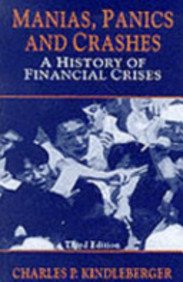Wiley Investment Classics
1 total work
Economists mostly believe that financial markets are ruled by rationality after intelligent investors digest all the relevant information. Economic historians concede that this is generally the case but that, on occasion, these markets get caught up in herd behaviour, possibly irrational enough to be called manias, overdo bidding asset prices up, leading to consequent and subsequent collapse. The first edition of Manias, Panics and Crashes in 1978 proved to be prescient, as exemplified by the October 1987 Wall Street Crash. This led in 1989 to a revised edition, which also filled in some gaps in accounts of nineteenth century crashes. This third edition is inspired by the Tokyo bubble that drove the Nikkei share index from 12,000 in 1987 to 39,000 two years later, and the crash in the first months of 1990 which brought it back down to 15,000. The opportunity has also been taken to repair some 17th century omissions, especially the boom and bust of 1619-22 in the Holy Roman Empire at the start of the Thirty Years War, and the Dutch Tulipmania, peaking in 1636.
